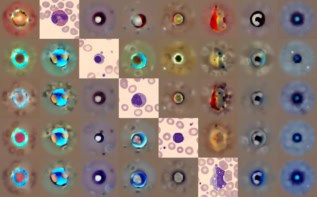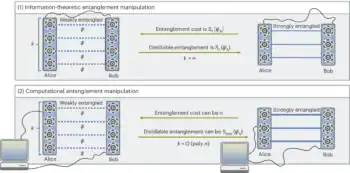
Researchers at the University of Warwick in the UK have created an ultrasensitive magnetometer based on nitrogen-vacancy centres in diamond that’s small enough to be used for keyhole surgery. The sensor, which currently measures just 1 cm in diameter and could be made even smaller in the future, is designed to detect small cancer metastases via endoscopy or laparoscopy.
“It’s really bad news when tumour cells spread from their original site, and so it’s very important to detect this metastatic cancer as soon as possible,” says physicist Gavin Morley, who led this research effort together with his doctoral student Alex Newman. “The new cancers are often lodged in the lymph nodes and our device could be used to detect these cancers early when they are still small.”
Existing techniques to detect metastatic tumours include MRI and CT, but these technologies can only detect tumours that are at least 2 mm across. While alternatives like sentinel lymph node biopsy can detect tumours with a volume that is 1000 times smaller, this technique typically involves the use of radioactive tracer fluids that require special safety precautions, or blue dyes, which cause an allergic reaction in one in a hundred people.
Tracer travels to the lymph nodes
Medical device company Endomag recently developed a clinical technique that involves the surgeon injecting a magnetic tracer into a breast cancer tumour, explains Morley. “The tracer fluid travels to the lymph nodes and the surgeon can then identify the metastatic cells there and remove them.”
While this approach is efficient for breast cancer, the magnetometers employed today to detect the tracer are too large for use in keyhole surgery or endoscopy, he explains. “We wanted to create a device that can be used to detect the metastatic tumours and so built a version that’s smaller. The surgeons we’ve spoken to say that colorectal cancer could be the best place for us to focus on first for our magnetometer.”
NV magnetic sensor
Morley’s group has been working on magnetic field sensors using diamonds and lasers for ten years now. The diamonds are grown by the company Element Six in Oxford and they contain quantum defects known as nitrogen-vacancy (NV) centres. These are created when a pair of adjacent carbon atoms in the diamond lattice is replaced by a nitrogen atom, leaving one lattice site vacant. An NV centre is basically an isolated spin that is highly sensitive to an external magnetic field and it emits florescent light in a way that depends on the intensity and direction of this field. Measuring this light allows it to be used as a magnetic sensor.
“Our speciality is using optical fibres to send laser light into the diamond and detect the red light that comes back,” says Morley.
In this work, reported in Physical Review Applied, it was Newman who built the new sensor, Morley tells Physics World. “Alex likes fixing old sports cars and I liked the way he applied that thinking to this new technology. He tries different strategies and has built new types of diamond sensors that no-one has managed to build before.”
The Warwick researchers are now working on a number of applications for their sensors: as well as use within healthcare, they could be employed in space applications and future fusion power plants, says Morley. “Indeed, for Alex’s project, we were working on detecting damage in steel to help the National Nuclear Laboratory who have nuclear waste stored in steel containers. I then met Stuart Robertson, who is a breast cancer surgeon at the University Hospitals Coventry and Warwickshire: he told me how useful the Endomag solution is for breast cancer metastatic cells and I thought we could build a magnetometer that would help.”

Carbon defect in boron nitride creates first omnidirectional magnetometer
Working with several surgeons, Morley, Newman and colleagues are now developing this work as part of the UK Quantum Biomedical Sensing Research Hub (Q-BIOMED). “For example, Jamie Murphy in the Cleveland Clinic in London is an expert on keyhole surgery, with a big interest in colorectal cancer,” says Morley. “And Conor McCann is an expert on gut health at the UCL Great Ormond Street Institute of Child Health. We’re interested in spinning out a company ourselves to take this forward alongside other applications of our diamond sensors.”
The researchers are also busy making the sensor even smaller. “At the moment the probe is 1 cm across, but we think we can get it down to be only 3 mm,” says Morley. “While 1 cm is small enough for keyhole surgery and endoscopy, getting it even smaller would make it useful for even more types of surgeries.”



